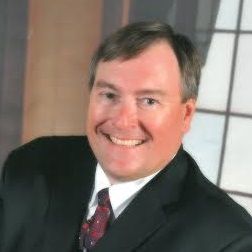- Home
- About
- Courses
- IR/INFO CONFERENCE
- Software
- EXPERT SERVICES
- STANDARDS
- Proposal Templates
- Electrical Systems and Rotating Equipment
- Building Envelopes
- Insulated Roofs
- Photovoltaic Systems
- Pest Detection
- Yachts and Small Craft
- Thermal Imaging of Horses
- Optical Gas Imaging
- Measuring Reflected Temperature
- Measuring Emittance
- Measuring Transmittance
- Distance/Target Size Ratios
- Complete Series
- Resources
- BUSINESS OPPORTUNITIES
- STORE

Director’s Message

An accuracy statement of “± 2%” is actually an abbreviated statement. The full statement is “± 2% of target temperature or 2º C, whichever is greater”. The full statement is required since measurement accuracy generally decreases with lower temperature targets. Furthermore, an accuracy of “± 2%” would place accuracy at 0% when measuring targets operating at 0º!
With respect to accuracy statements, it is also important to note that manufacturers test infrared instruments under laboratory conditions using high-emittance, blackbody simulators in a controlled environment. As a result, manufacturers derive accuracy specs under ‘best case’ conditions which may not be possible to duplicate in a given work environment.
To help ensure measurement accuracy, thermographers should:
- Always measure perpendicular to the target
- Correctly set radiometer inputs for emittance, reflected temperature, distance, and humidity
- Ensure target size is adequate for subject radiometer’s spot measurement size
Lastly, real-world challenges can create situations where it is not possible to measure temperatures to the accuracy level promised by an instrument’s spec sheet. These challenges include, but are not limited to, hot or cold ambient temperatures, and the use of different lenses or filters. Whenever accurate infrared temperature measurement is not possible, one should consider using contact thermometry instead.
Join Infraspection Institute’s Course Reseller Program

With the proliferation of cheaper infrared cameras, competition has become more fierce and profits more scarce. Offering training can not only expand your services and increase profits, it can help provide a long-term relationship that keeps your clients ‘on the farm’ and close to you.
Connecting the Dots

Thermographers who perform infrared inspections of flat roofs or underground piping systems often outline the perimeter of exceptions with spray paint. Directing a qualified assistant to accurately outline exceptions can be both time-consuming and frustrating. The following suggestions can help to speed inspections while preserving coworker relations.
- When using spray paint to mark at ground level, use a spray paint and dispenser designed for the task
- Make sure surfaces to be marked are clean and dry and will not be damaged by spray paint
- Never spray paint where wind may carry paint to unintended surfaces
When outlining the perimeter of an exception, use a series of dots to outline the most prominent features of the exception. These dots can then be connected with a solid line once their location is deemed satisfactory. Depending upon weather and target conditions, spray painted lines will often show clearly within the thermal image.
Call for Papers for IR/INFO 2018

We are presently seeking papers and presenters for IR/INFO 2018. Invited topics include, but are not limited to: safety, emerging applications, building sciences, related NDT, case histories, as well as tips and tricks.

Professional Curriculum
Infraspection Institute instructors use extraordinary techniques to deliver stimulating, effective, and relevant instruction. All of our instructors are highly experienced, practicing thermographers. Each brings years of unmatched, real-world experience to the classroom. Our courses are taught using a combination of dynamic multi-media presentations, hands-on demonstrations and one-on-one interaction with students. Our courses integrate theory, practice, and case studies in a fun, relaxed atmosphere designed to maximize your learning experience.

